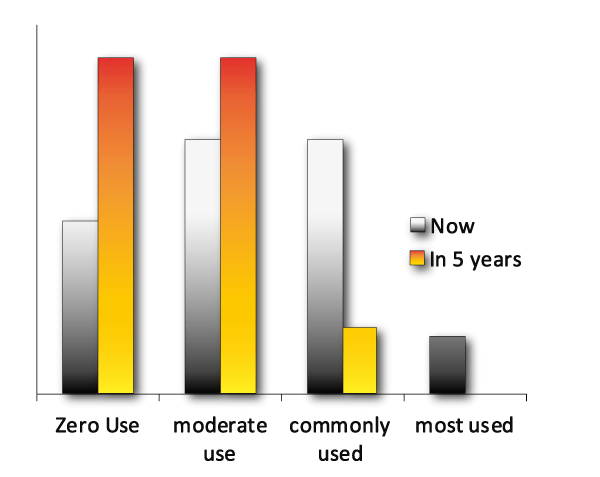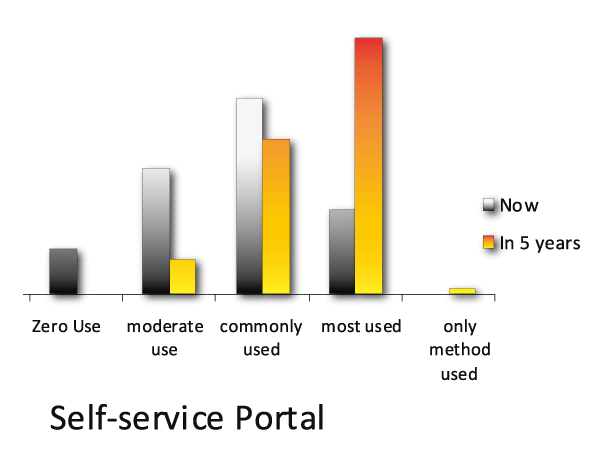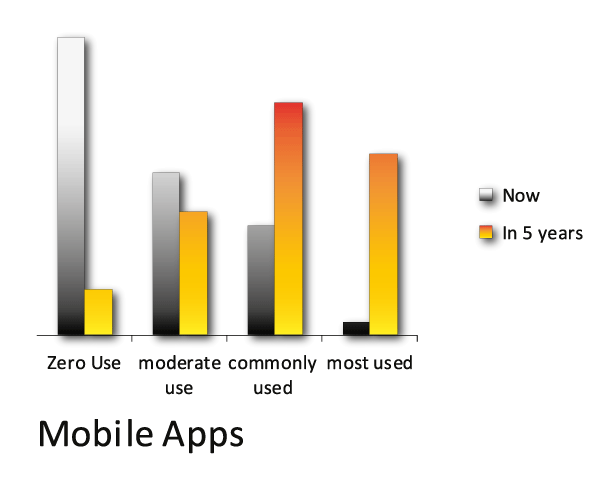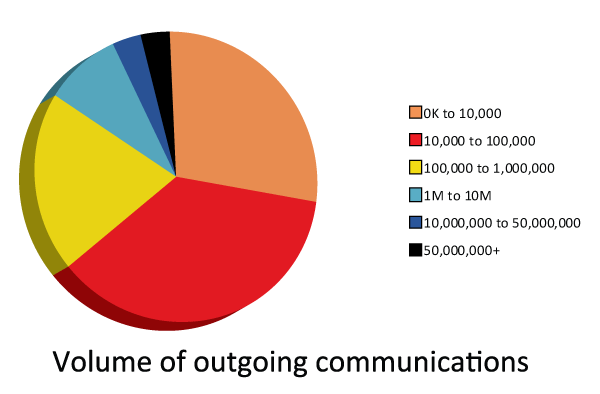The death of post

Ahmed Fahour, Managing Director and CEO of Australia Post, believes that letter volumes are set to “literally fall off a cliff”. A survey of IDM readership in medium to large enterprise and government has backed up Fahour’s predictions. More than half of enterprise and government organisations in Australia and New Zealand surveyed on their client communications roadmap by IDM expect printed mail to disappear from the mix within five years’ time.
However paper is still a force to be reckoned with, as less than 20% of those organisations surveyed had migrated to 100% electronic channels.
Fahour recently told a Sydney seminar audience that this drift to digital would have a huge impact on Australia Post’s bottom line
“We will soon cease being a contributor to the Government’s revenue and, instead, become a drain on it,” reported the Australian Financial Review.
More than 97 per cent of current Australia Post mail deliveries are business and government communications. If the ALP or Coalition achieve their policy objectives of having 80 per cent of government communications online by 2017, the prediction of an 11 per cent decline in mail each year could be an “understatement”, he reportedly warned.
In July 2014, IDM and the Institute for Information Management (IIM) undertook a survey on multi-channel communications that generated more than 100 individual responses from organisations in a diverse range of industry sectors, including all levels of government. The survey was sponsored by Open Text.
A third of those surveyed generate more than 500,000 documents annually. At the top of the scale were respondents at organisations outputting more than 50 million individual pieces of correspondence per annum.
The survey found that although the use of social media and mobile apps is expected to grow significantly, the self-service Web portal is expected to dominate most interactions within the same time frame, and email will hold its own.
Kiwibank
Carol Feuerriegel, Information Governance and Quality Manager at Kiwibank, says the bank is trying had to encourage customers to move to e-statements and reduce print output but is restricted by the demographics of its customer base.
“We are only an 11-year old bank but we have a lot of older customers who are reluctant to change, they like receiving a physical letter and a paper statement.”
The state-owned bank is actually in a unique position as a subsidiary of NZ Post and utilises its Post Offices as branch outlets.
Feuerriegel expects the bank’s Web portal will become the most commonly used medium over the next 5 years, although physical mail will not disappear entirely.
Kiwibank is currently underway with an RFP to obtain a new ECM platform to replace the bespoke in-house developed solution presently employed to capture scanned home loan documentation. The bank is also moving to deploy SAP to replace its core banking system
“A dedicated platform for managing of Outgoing Document generation is something we are looking at as a next step,” said Feuerriegel. “Managing multiple communications streams is a challenge for the evolution of our ECM strategy.”
Government, whether federal, state or local, is the segment most bullish about the prospects of moving away from physical mail completely to rely entirely on email, self-service portals, mobile apps and other digital channels.
Around a quarter of the government organisations that completed the IDM survey expected to completely remove post from the mix within five years. Other sectors with similar timelines include Mining & Resources and Transport & Logistics.

How big a part does traditional mail play in delivering individual information to your clients? IDM's reader survey shows a sharp drop predicted.
Insurance
One of Australia’s major providers of insurance and underwriting is currently implementing a strategic Customer Communication Management solution. It has moved towards a digital first strategy to engage customers and intermediaries like brokers electronically and then continue the conversation digitally.
A Thunderhead document generation solution has been implemented to extract data from its line of business systems and manage communications across all outbound channels.
The insurer’s drive towards digital over the past three years now sees over 70% of more than 1.5 million individual pieces of correspondence transmitted via email.
When it initially went live towards the end of 2012, the Thunderhead Outbound correspondence composition tool was employed for claims related correspondence, and it is now about to go live with policy and underwriting documentation.
The insurance industry regulator APRA relaxed its policy in 2013 to allow policy holders to opt in to receive policy documents electronically.
For a company with a long history that stretches back into the last century, the insurer has faced the battle of adapting legacy applications and work practices to the digital era.
A program is underway to replace the insurer’s main policy management stem which has been in place since the 1960s. This will be accompanied by the introduction of a portal application for online claims management.
“Over the next 5 years paper is going to shrink even more as a percentage of the correspondence we send out. The new portal on its way will enable us to send a link so the policy owner or an intermediary can access their documents via a portal so instead of sending attachments,” said a staffer.
“We are also sending a number of notifications via SMS and looking at interacting with social media sites. It’s a generational thing so if somebody wants to receive notifications via Facebook we will be able to accommodate that.”
A copy of all outgoing correspondence related to claims or policies is stored in OpenText Records & Documents, Vignette Edition which integrates document management capabilities with records retention policies.
This is employed as a transactional document repository and the insurer has just gone live with Open Text Content server for non-transactional documents.
The volume of incoming correspondence and documentation is almost double that of outbound, more than 2 million items per annum, for which the insurer employs OpenText Capture Centre for inbound scanning and classification, and an additional product called Adlib that renders to PDF/A.

Federal government agency
Moving to all-digital correspondence is an ambition for one mid-size Australian federal government agency, although it has some legislative restrictions against being too proscriptive with its users/clients.
When the agency was established the enabling legislation included provisos that prevent it restricting modes of communications, so it won’t be able to switch off the traditional mail channel at its own whim.
A spokesperson told IDM, “We intend to try but must maintain avenues for those who want to use such methods, and realistically there will always be a segment of the population that prefer to use pen and paper”
The agency presently receives around 2.5 million pages of largely unstructured information via Aus Post and e-mail. This year saw the implementation of its first e-forms and the agency wants to increase their usage as rapidly as possible.
Inbound information is captured using an EzeScan solution then stored in TRIM using software developed in-house which also initiates relevant workflows.
Outgoing correspondence volumes are currently around 500,000 physical mail items annually and about double that quantity as email. Wherever possible the agency is collecting email addresses from people it deals with and communicates with them that way, with copies stored as PDF/A documents in TRIM.
An online portal is being planned to allow the public and other government agencies to log in and view files and correspondence relating to them and to update their status. Some documents can’t be sent via email owing to security and privacy concerns, so this portal with a unique login aims to get around those concerns to allow documents to be submitted digitally.

Legacy obstacles
When it comes to identifying the main obstacles preventing organisations from moving to digital communication with citizens/customers/users, the traditional challenge of adapting or replacing legacy, outdated and disparate systems still looms large
The problem of communicating with clients unable to access digital communications due to distance/age/connectivity/disability, etc. is widespread. Much of the difficulty arises from the range and variety of data sources for outgoing communication.
More than 90% of those surveyed are pulling data from ERP systems, while legacy business systems also loom large.
“Difficulties emanate from corporate inertia, systemic confusion and anxiety and siloed skills,” wrote one of those surveyed, while others point the finger at the fact that “Older generations still love hard copy” and “poor change management processes.”
“Along with digital technology comes a tendency for management to reduce staff resulting in problems with Info Governance & staff skill levels,” commented one Records Management/Document Control Specialist at an Australian federal government agency.
“Organisational culture” was another culprit blamed for the inertia holding back progress to digital, and this is a phenomenon not just internal, as many respondents pointed out the change management challenge also lies with organisations they need to deal with externally.
“A big part of the change management challenge is client behaviour, and often their technical literacy,” said one.

Local government
The City of Tea Tree Gully in the outer north-eastern suburbs of Adelaide is one of the small number of local government authorities in Australia to offer delivery of rate notices and other council correspondence via the Australia MyPOST Digital Mailbox and BPay View.
Ian Gibbs, Team Leader - Information Management for the City, is confident that email and a suite of new digital channels, such as the Digital Mailbox and BPay View, will support consumer transition from traditional mail.
Gibbs likes to walk the walk as well as talk the talk when it comes to digital mailboxes, and is now using these services to receive personal correspondence from his bank, Australia Post and utilities.
“We can’t be asking our clients to move to these digital services if we aren’t prepared to use them ourselves,” notes Gibbs
“We are currently sending 160,000 rates notices a year so if we can move to digital channels the savings in postage add up pretty quickly.”
Gibbs estimates that over 75% of the council’s outgoing correspondence is sent as physical mail with data extracted from Civica Authority.
As the council moves to exploit a broad range of digital platforms to replace mail it is exploring how better to manage the presentation, retention and archiving of the disparate channels.
An online forms now allows ratepayers to submit applications for things such as dog licenses with supporting documentation and make payments online, and Council is keen to enable residents to notify council officers of incidents directly from their mobiles.
